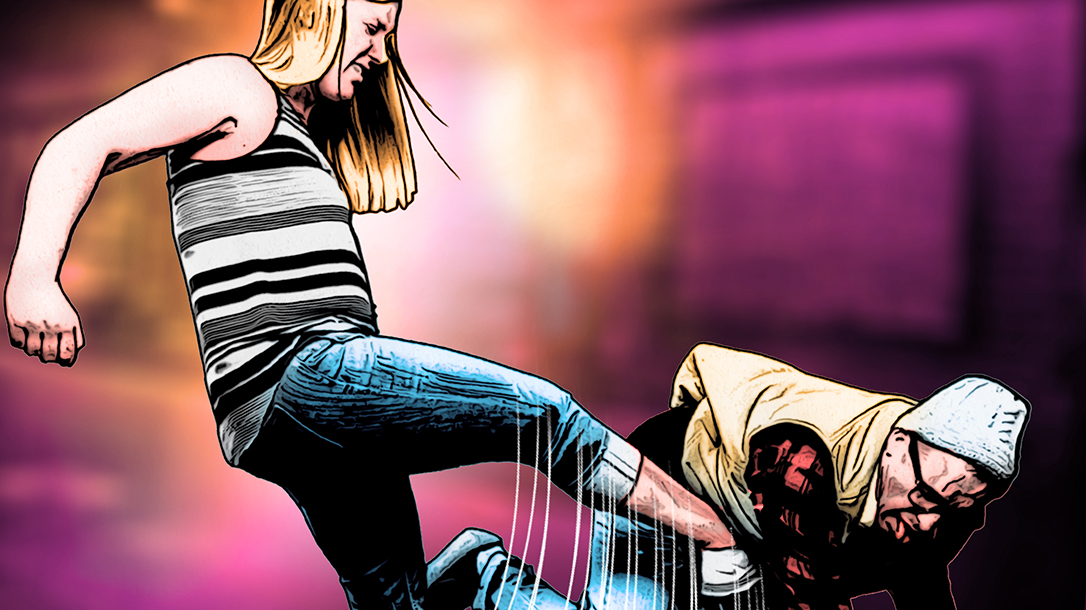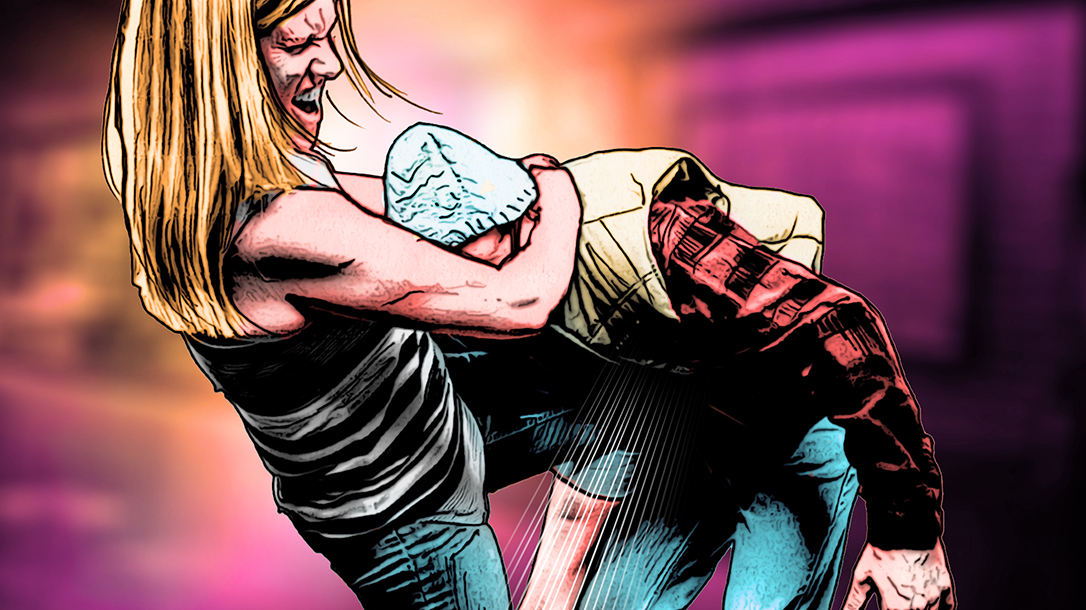If you’re not a pro fighter with Jean-Claude Van Damme type flexibility, not to worry! I’ve got five types of kicks that do the trick for self-defense and get you out of a bad situation. These strikes are very effective when done correctly. Let’s start with the best one first! If you know me, you know what I’m going to say …
Types of Kicks — Kick To The Pills
The trick is to “split the opponent in half” or, at least, that needs to be your mindset.
Now, when you focus on landing a really hard kick between the legs of a guy (I hear it hurts the ladies, as well), you might give away that you are going to kick because you will be “loading up.” Watch out for this, and try not to “telegraph” your intentions. Position yourself in such a way that your strong, kicking leg is going to be the back leg. Keep talking to the person and be very animated, with lots of movement. Then, out of the blue, KABOOM! Oh, and since a knee strike is considered to be a kick, you can use the knee as well. Remember, if one is good, two will be better!
Low Kick
If you know what a low kick is and what damage it can do to your opponent, you are probably one out of 1,000 people — not many people know the power of these types of kicks.
I won my last fight using low kicks against a guy who was 50 pounds heavier. After four kicks to his thighs, the fight was over, and that was against a pro. Most likely, one good low kick will take care of somebody who doesn’t know how to deal with them. (It’s the ultimate “charley horse.”) The low kick is a roundhouse kick to the thigh of the opponent delivered with your shinbone. You want to make sure that you connect with your shin to the thigh at a 90-degree angle for the best result. The least amount of his muscle “catching” the kick will hurt the most. When striking from a close distance, the kneecap is a very good weapon for this kick, as well.
Oblique Kick

This is a kick delivered with the bottom of your foot aimed just above the knee. If you do this while talking to a person, both his legs will likely be almost fully extended and not in a fighting stance. That means when you kick the leg just above the knee, the leg will hyperextend, which is not a good thing. (But no worries — it’s not good for him — you will be just fine!) If you kick with your right foot, have your toes pointing to the right of you (so the foot is a little bit horizontal). When you kick like this, your foot will be “wider” and cover more area of the leg of your opponent, and you won’t move your hips as much, so you will be less likely to telegraph.
Knee To The Solar Plexus

While talking to your adversary, suddenly leap forward, grab his neck with both hands and throw a knee (delivered with your strong leg) to his solar plexus. The trick is — while you are talking to him — to step with your strong leg backward a bit (as in a “fighting stance”). Of course, you don’t want him to notice you positioning yourself this way, so be subtle. This way, the knee comes from farther away, and it will have more power. Why is this so? I frequently tell my students that the farther a strike travels on its way to its target, the more power it can develop.
This kick’s trick is to connect with your opponent’s solar plexus with your kneecap. DO NOT close the distance so fast that you hit him with your thigh instead of your kneecap. Keep your hips away from him and let your hip flexors do the work. When you throw your arms around his neck, his natural reaction will be to protect his face, so his defenses will move upward, exposing his solar plexus.
Trip Him
If you’ve tripped or knocked your opponent down, it’s time to kick or knee the body! Just step back, create space, aim and kick as hard as you can. While you can do the same thing with your knee, a foot kick is better. Why? Because you will be farther away from your opponent and less susceptible to a counter. If your opponent is on his back, don’t let him get up. Grab one his feet and knee the thigh. The thigh muscle will be relaxed and if you deliver it using your kneecap, then one well-placed, hard knee to the thigh will end the fight. These types of kicks are easy to learn and effective. Stay safe!
Bas Rutten is a frequent contributor to Skillset Magazine! You can check him out on our podcast, Skillset Live, or pick up a back issue at OutdoorGroupStore.com! Now get out there and learn these types of kicks!






















